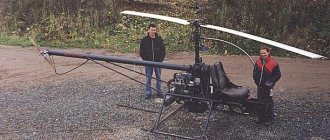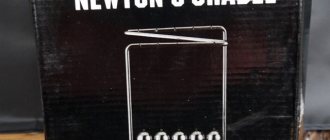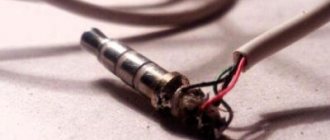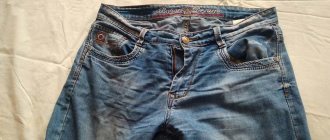Bearing housing without a lathe: a neighbor's experience
Personally, this knowledge is useful to me in a completely different direction: the axle of a windmill, the connecting rods of a homemade steam engine, and who knows what else: my neighbor’s project “trailer for a walk-behind tractor” is ongoing, and this time he came to visit with a ready-made unit for the rear axle instead of a gearbox:
The times when a familiar turner made workpieces lying under his feet for 0.5 fire water have sunk into oblivion. We have only one turner for the whole village and a lathe from the last century is “always under repair”, so you have to do everything yourself
It's so simple
: the length of the outer circumference of the bearing is measured and an extra strip of metal is cut out from the pipe, after which the bearing is placed inside, and the entire workpiece is in a vice and with the help of a hammer and such and such the outer pipe is adjusted to the required size
All? Not yet:
To prevent the bearing from falling out of the housing, cuts are made in the pipe and the “antennae” are bent inward using a hammer and a magic spell (the method does not work without it):
Since Sergeich has two bearings in the housing, it was necessary to install a spacer between them, repeating the steps above: a pipe of a smaller diameter, removing the excess, etc. no welding, it’s just a “spacer” so that the bearings inside the race don’t move around.
The final assembly is installation of the internals and rolling of the assembly from the opposite side.
Previous article from the “series” about a trailer for a walk-behind tractor: link
Source
How to make a bearing housing without a lathe
In this review, the author shows how to make a bearing housing from scrap metal. Moreover, in this case you can do without a lathe.
To make the bearing housing you will need a metal corner 32*32 mm, a metal strip 5 mm thick and 19 mm wide.
The author also uses a piece of steel pipe with an outer diameter of 60 mm (internal - 54 mm) and a steel washer with an internal diameter of 31 mm (external - 55 mm).
Main stages of work
First of all, you need to cut a piece of a suitable width from the pipe and clean the edges of the cut with a grinder to remove any burrs that have formed.
Then you need to make a slot in it - using the same grinder with a cutting wheel or on a band saw.
At the next stage, using a hammer and a bench vice, the master reduces the diameter of the holder to the required size and welds the edges together.
After this, we press the bearing into the housing and weld a metal washer to one of its sides.
Next, cut off a piece of strip and two pieces of corner. We weld them to the race with the bearing.
For details on how to make a bearing housing without a lathe, see the video below.
Source
How to remove the outer bearing race of a washing machine?
In this article we will analyze the installation diagram of angular contact bearings and tell you how they are mounted on the shaft and in the housing in different ways. The choice of the most suitable one depends on the type of support unit, its size, the load taken and many other factors. Sometimes the process requires the use of additional devices for more reliable installation. Let's consider the most popular paths recommended for installation, as well as possible problems associated with incorrect implementation of the procedure.
Manufacturers and labeling
Depending on the type of manufacturer, there is a certain marking of parts. If this is not a bearing housing created with your own hands, it will definitely have the designation of the corresponding company that created it.
There are a large number of brands, but the following manufacturers are considered popular today:
- China and Singapore produce parts marked FBJ.
- Italian bearing mechanism elements can be marked as KDF or TSC.
- Japan labels their cases as ASAHI or NSK.
- SKF products are so expensive that they are practically not found in equipment in our country.
The price of such products depends on the manufacturer and, as a rule, the higher the quality of the part itself. Polish and Russian cases are considered the cheapest, but short-lived; the presented parts are manufactured by the Japanese of higher quality. Further, Italian-made components have higher reliability and cost, followed by Serbian mechanisms. The most reliable, but very expensive, are considered to be German and Swedish, as well as some Japanese (NTN, KOYO) bearing housings.
Preparing parts for connection
To successfully perform work, it is necessary to create comfortable conditions. It is best to secure the supports in a clean room, where there are no working machines that could create excess dust, shavings, or dirt during the production process. If the installation is carried out in a room where it is impossible to avoid the negative influence of the environment, the part should be additionally covered with paper or foil. In addition, other preparatory steps need to be taken:
- • Collect in advance all required spare parts, tools, instructions for use and installation.
- • Carefully study the existing drawings of the structure into which it is planned to install the support unit.
- • Clean all surfaces from dust and other particles.
- • Check whether the shape and size of the products really matches the holes in the structure.
- • Immediately before starting installation work, thoroughly rinse the support to remove the factory preservative. The only exception can be made if the unit is filled with special lubricant necessary for uninterrupted efficient operation in the future.
Having completed all the procedures, you can begin installing the support bearing on the shaft or in the housing. It may seem that the listed recommendations are not mandatory to follow, but in reality, poorly cleaned parts during operation will quickly be negatively affected and their operation will be impaired. At the same time, the entire mechanism will suffer.
Features of installing the release bearing
This p/sh is one of the main components of the vehicle clutch assembly, installed between the engine and the gearbox. Its task is to open the flow when the pedal is pressed. A special drive moves the p/w along a guide on the shaft to the basket, pressing on the diaphragm. Different vehicles use mechanical and hydraulic parts. To install, you must follow a certain algorithm:
- dismantle the gearbox to gain access to other components;
- move away the ends of the clamp where the coupling meets the glass;
- remove the p/w from the bushing simultaneously with the coupling and the spring holder, pressing out the 4 fasteners;
- inspect the old component for defects, check the seat and adjacent components;
- Before installing a new unit, check for play and the possibility of free rotation;
- mount the part on the guide bushing and fix it with a spring device together with the coupling, after applying copious amounts of lubricant;
- After checking the proper fit, replace the gearbox.
A similar method describes replacing the p/w on a VAZ passenger car; when installing a release bearing on a MAZ and other cargo vehicles, you should follow the detailed instructions and recommendations of the vehicle manufacturer. It is advisable to use specialized devices and carry out repair work at a service center, this is especially true for machines under warranty.
SKF flanged bearing housings
SKF manufactures prefabricated sealed Y-type flange assemblies filled with lubricant. To compensate for shaft misalignment, the manufacturer installs radial single-row ball bearings, the outer rings of which are spherical.
Their bodies are made from:
- composite materials;
- stamped sheet steel;
- casting from cast iron (gray).
Cast iron housings have oilers, as well as channels intended for supplying lubricant. Stamped steel housings do not have such a lubrication supply system. The manufacturer supplies protective covers for the shaft ends. Cast iron housings are designed for increased loads. For lighter loads, the company produces stamped sheet housings available with oval, triangular and round flanges.
For the pharmaceutical, food and chemical industries, a special series of Y units are manufactured, enclosed in stainless steel housings.
Features of fastening to the body
There are several types of bearing fitment on the shaft in the unit housing. The most common of them today are the technologies described below.
One of the most common is a bearing in a housing on legs. It has the ability to lubricate and is involved in the creation of high-speed mechanisms. These could be fans, emergency energy saving systems, flywheels. Their distinctive feature is the ability to work at elevated temperatures.
The inner ring can also be secured to the shaft using set screws. There are cases whose inner ring has a conical hole. The part is secured in it using an adapter sleeve.
There are also cases in which the installed product is secured with a special eccentric ring.
Rules for installing roller assemblies
Roller bearings are often used to minimize the friction force during operation of the mechanism. They are durable and efficient, and therefore are often installed in complex technical structures, such as industrial machines. But to achieve a productive result, you must follow certain rules.
It is better to carry out the process using a hydraulic or manual press so as not to damage the parts. There are other recommendations:
- • To begin with, the seats are coated with a special lubricant. Its layer should be thin, but sufficient to freely accommodate the unit.
- • Depending on the specific type of support and the actual design of the mechanism, the installation side is determined.
- • Next, the mounting cup with stop is aligned with the roller bearing ring strictly along the axes.
- • Once compliance has been ensured, an initial test load is applied to see how smoothly the movement occurs.
- • If the result is satisfactory, final installation is carried out and the gap is adjusted.
- • At the last stage, all elements are fixed.
If you do not skip a single step in the process of installing the part, the subassembly will smoothly fall into place. Otherwise, distortions often occur. They interfere with wear resistance and lead to rapid breakdowns. You can check how successfully the work has been completed not only during the first test run, but also during a simple inspection of the product. Obvious problems will be immediately obvious, which means they must be eliminated immediately.
Tools you'll need
A range of mechanical tools have been developed to simplify the installation process. In particular, NSK offers the following products:
- The FTN333 mounting kit is an excellent option for installing small to medium diameter bearings (from 10 to 55 mm) using the cold fit method. This way you will complete this operation correctly and without any problems.
- Wrenches - available in standard and reinforced versions. Indispensable when installing locknuts. This is a simple and inexpensive means of mounting tapered seat bearings.
For the convenience of working with large diameter bearings, the company offers hydraulic equipment:
- Pullers, pushers and puller plates – provide large loads to maintain the recommended contact force between the part ring and the surface. They simplify the installation process and eliminate the possibility of errors during installation.
- Nuts – Using the offset method, they increase the accuracy and speed of installation of tapered bearing components. They have an anti-corrosion film, which means they have a long service life.
- Pumps - intended to be used together with nuts, pump oil and greatly simplify the operation.
In addition, induction heaters have been developed for each bearing size. NSK offers a range of devices in different sizes and capacities. They ensure optimal and safe parts temperatures to ensure a smooth shrink-fit installation process.
Rules of use and tips
When using bearing adhesive, you must adhere to some rules:
- Despite the fact that some structures are used on uncleaned surfaces, if possible, it is still necessary to clean and degrease. This will have a positive effect on the gluing result.
- A stronger connection will occur on rough surfaces.
- Do not allow material to get on the bearing balls, as this will lead to damage to the part.
- The glue must be distributed evenly over the entire plane of the element being connected. Some compounds can be applied to one of the planes being connected.
- for applying its compositions it provides for manual use, semi-automatic and automatic methods.
- For better distribution of the mixture on the planes, it is necessary to rotate them relative to each other with the composition applied to them.
- If re-gluing occurs, then previous applications must be removed from the surface.
We recommend watching the video review:
Advantages of non-lubricated and lubricated housings
Today, manufacturers produce both lubricated and non-lubricated bearing housings. The bearing housing, the design of which is designed for standard re-lubricated units, contains a lubricator.
The advantages of housings that are not refilled with additional lubricant include savings on maintenance and compact design. There is no risk of oil leakage in such parts. This results in increased cleanliness of the part.
Re-lubricated housings are used at high temperatures and in dusty environments. If it is not possible to use a part with a lid, such a unit is used in conditions where it is splashed with water or other liquids.
If such a housing is not used regularly, the bearing will work properly. Such parts are used when the unit moves at an accelerated rate, under increased loads and the need to reduce noise during operation.
Installation of rolling bearings
Installation of support units of this type requires compliance with certain rules and standards. Thus, the transmission of forces through the bodies providing rocking is not allowed, so as not to damage the parts. Therefore, special equipment is used in the process. The variety of types of rolling units dictates certain features. They must be taken into account, otherwise the procedure will become much more complicated. Here's what you need to take note of first:
- • Radial roller bearings require special additional support to securely fix the shaft in the direction of the axis.
- • Proper installation of the needle bearing is carried out first on the journal if there are no rings.
- • Thrust single assemblies are mounted with a smaller diameter on the shaft and a larger diameter in the housing.
- • If the angular contact type of parts has a removable ring, separate assembly is necessary. In this case, these types of devices should be located in pairs towards each other.
- • Press fit is carried out only on one of the load-bearing rings – the inner one. Otherwise, there is a high risk of damage to the device.
There are other nuances that are difficult to take into account for people who are far from the technical side of the problem. If you have questions about how to fit, put on and secure a bearing onto a shaft or into a pipe, regardless of its type, shape, or size, it is better to seek advice from specialists. This will avoid errors and breakdowns and increase work efficiency. Considering that nodal supports operating on the rocking principle are mounted in complex, expensive equipment, doing this yourself is not always economically feasible.
Bearing flange units from NTN-SNR
The manufacturing company NTN-SNR is a French-Japanese joint venture that produces bearings for aircraft, missiles, helicopter transmissions, etc. Among the extensive product range of this manufacturer are flanged bearings, as well as housings of various types.
The company produces ball bearing units with cast iron bodies and round, oval, and triangular flanges. It produces special corrosion-resistant models for chemical, medical and food equipment. These include parts made of thermoplastic, characterized by low weight and increased resistance to aggressive external influences.
Textile equipment uses models enclosed in flanged housings for three-point fastening.
Installation of sliding assemblies
Such parts can be one-piece or detachable. The installation features primarily depend on what type of product is planned to be replaced. If we are talking about the first group, the bearings are first pressed onto the shaft and secured in the housing. This can be done not only using special pressing equipment, but also manually. In this case, the step-by-step instructions look like this:
- • The sleeve fits onto a mandrel that is centered in the hole.
- • Using a hammer, the structure is carefully inserted into the seating slot. It is important to avoid distortions.
- • The already pressed bushing is secured with special stoppers.
If you press the bearing onto the shaft correctly, you can achieve high wear resistance from the nodal support. The external condition of the element used is important. If there are scratches, chips and other damage on it before starting work, it is better to replace the part. When receiving a strong load, the damaged element will continue to collapse. A small abrasion can quickly become a serious problem. Especially if there are accompanying problems with lubrication or incorrect installation.
Detachable structures are installed separately in the base and cover of the mechanism. This leaves a small gap allowing normal operation. An important feature is the need to adjust this type of nodal supports, regardless of whether the replacement is made in a home workshop or in mass production. Moreover, this is already accomplished during the initial inspection. Correct installation is assessed by how freely the part slides in the structure.
Homemade bearing housing
Making a bearing housing with your own hands is not that difficult.
A good material for making the case is graphite caprolon. It is characterized by increased wear resistance, strength and slip. You need to cut out the hole by holding the material in a vice. Using a drill, knife and file, make a straight hole in the caprolon.
A sliding gasket should be inserted inside. It is better to make the housing split and clamp it with a screw on the shaft. The smoother the hole, the better the part will work.
It happens that the body is even made of wood. The ring is made from sectors, which are then pulled together. This automatically compensates for bearing play.
Having examined the types and structure of such a part as a bearing housing, you can understand the principle of its operation and carry out independent repairs of quite a large number of equipment at home.
general characteristics
The bearing housing is a special part. It is usually made of cast iron or other alloys. A bearing housing is used to seat the main shaft on the main platform. It secures the part tightly.
The housing and the bearing itself - rolling, sliding and other varieties - together create a unit. It is easy to find in the equipment and technology of enterprises in all industrial sectors.
Since quite a few types of the presented parts have been developed, there are even more cases for them. Moreover, manufacturers are ready to produce both standard configuration products and housings for specially shaped bearings. In the latter case, an individual drawing is created, on the basis of which the master produces the required part. This makes it possible to ensure that the unit complies with existing production conditions.
How to install an angular contact bearing
The difficulty of installing this type of assembly supports lies in the different diameters of the inner rings. One of them is always looser and has sufficient clearance to move, while the second is tight.
The scheme varies, but there is still a general rule. The loose ring is always placed on the stationary body part of the structure, and the tight ring is always placed on the rotating part. This installation allows the shaft to rotate quietly without interfering with the element or rubbing it. If you do not adhere to this basic rule, the entire structure will not work correctly.
In general, there are three fundamentally different options:
- • O-shaped, in which the mounted rings absorb axial load coming from two directions. This method is considered the most stringent and stable.
- • X-shaped, in which the nodes can also absorb double axial load, but with less rigidity, since they are placed facing each other.
- • Tandem, involves the perception of force in only one direction, and therefore often requires additional installation of an additional element.
The choice of a specific design solution depends on what type of nodal supports is used in the mechanism, how important the load capacity, noise insulation and other factors are.
Bearing housing and its types. DIY bearing housing
In the mechanisms that people use in everyday life, you can often find such a part as a bearing. They are found in systems of both household and industrial appliances. The bearing housing is part of the workpiece assembly. It comes in different shapes, varieties and sizes. To better understand its structure, it is necessary to study the bearing housing. Self-repair of many types of equipment will become clearer and more effective. If desired, you can create bearing housings yourself.
Bearings with split races
To carry increased axial and radial-axial loads, bearings with an outer (Fig. 757, a) or, less commonly, internal (type b) race that is detachable in the equatorial plane are used. The connector allows you to increase the number of balls and deepen the running grooves.
With a purely radial load, three contact points are formed in bearings of this type - two on a split race and one on a whole race (hence their conventional name “three-contact” bearings). Correct rolling of balls simultaneously on three surfaces is, of course, impossible. The balls, which are braked by two-point contact with a detachable race, slide along the entire race, so three-contact bearings are used to carry an axial or radial load while simultaneously acting as an axial load. The axial load presses the balls against only one surface (see c), on the other side the balls move away from the surface of the treadmill, and the result is a two-contact bearing.
The contact angle β depends on the ratio of radial and axial load. With a purely axial load in completed structures β = 20–30°.
Detachable clips are usually tightened with fastening nuts, and the mutual centering of the clips occurs along the seating surface.
Bearings designed to carry purely axial loads are installed in housings with radial clearance. In this case, bearings with half-clips are used, tightly connected using a sleeve rolled at the ends (type d).











